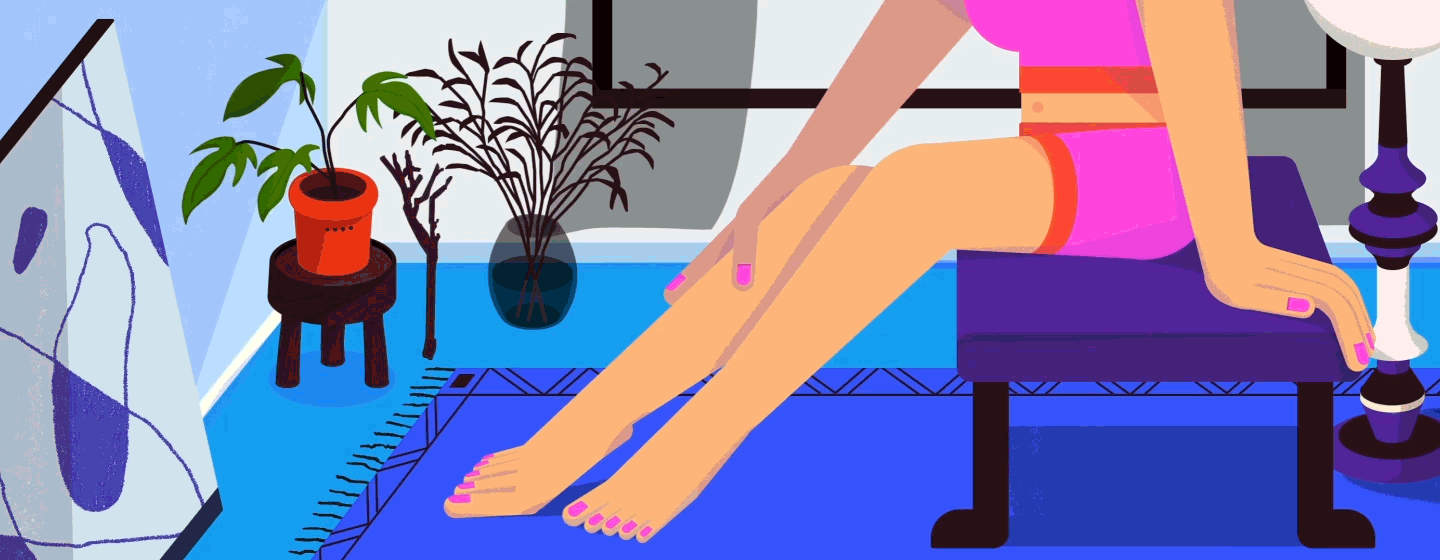Getting older surely has its advantages, but it also comes with many unwanted signs of aging. I’ve accepted that my body is not what it used to be and have grown accustomed to finding more gray hair, wrinkles, age spots, skin tags and moles — along with a host of other changes in my appearance — as I age.
Recently, I’ve noticed a new development of veins rising up from under my skin on my lower legs and ankles. Awesome, I thought. Since I don’t know much about varicose veins, I wondered if they were a sign of something serious and whether I needed to seek medical treatment. So, I decided to educate myself on what caused these bluish-purple winding welts and if there was anything I could or should do about them. It turns out, one-third of adults have varicose veins, and they are more common among women 50 and older.
Varicose veins are caused by the weakening or damaged walls in our blood vessels. As we age, the valves in our veins aren’t as effective in moving our blood back to our hearts. Consequently, some blood flows back down into the veins to pool, thereby causing them to swell.
Varicose veins often occur in our legs, ankles and feet because they are located on the lowest parts of our bodies, where they have to work harder against gravity to pump the blood back up to our hearts. Interestingly, varicose veins are much more common in women because there’s a good chance our hormones play a role in our circulation. Menstruation, menopause, birth control pills and hormone treatments all fluctuate hormonal levels that can cause our vein walls to relax and impede the pumping production of our blood. There is also a higher probability that you’ll get varicose veins if other family members have them.
I was relieved to learn from John Hopkins Medical that varicose veins are not considered a serious medical condition, but they can be uncomfortable. Most people with varicose veins only have to cope with the unsightly appearance of their condition. Some experience aching, pain, swelling and itching. And unfortunately, it will probably get worse as we age.
In rare severe cases these superficial blood pools can develop into a deeper veinous system known as DVT (deep vein thrombosis), which raises the risk of blood clots breaking off and traveling to your lung, causing a pulmonary embolism. Other serious risk factors include developing skin ulcers or sores that won’t heal. It’s important for anyone with a serious condition of varicose veins to make an appointment with their health care provider for evaluation, diagnosis, treatment and ongoing medical supervision. There are lifestyle changes we can make to lessen the risk of getting varicose veins or prevent the ones we have from worsening.
Obesity adds more pressure to your already aging blood-pumping veins, so it’s important to maintain a healthy weight and have a regular exercise routine to keep your circulation moving.
It’s also helpful to avoid standing or sitting for long periods of time and resist the tendency to cross your legs. Throughout the day, take frequent breaks to walk around and stretch whenever possible.
Elevating your legs above your heart will increase your blood flow and take the pressure off those weakening valves, so take time to do this at least three times a day for 15 minutes.
Don’t wear restrictive clothing that will impede your circulation, but using compression socks will help support blood flow and prevent varicose veins from getting worse.
And if you smoke, tobacco use damages blood vessels and decreases blood flow, so quitting will lower your risk and increase your overall health.
For serious cases of varicose veins, there are several noninvasive treatment options to consider.
Injection therapy (sclerotherapy) is an effective procedure where your doctor injects a solution (sclerosant) into your veins that causes your veins to swell and collapse, consequently rerouting your blood to healthier veins. The affected veins will eventually scar and fade away.
Endovenous thermal ablation is a newer technique that results in less bruising and pain and leads to faster healing and recovery. In this procedure, laser heat is directed through a catheter to close up the varicose vein. Eventually, that vein will absorb into the body and disappear.
Radiofrequency ablation (RFA) is a similar procedure using radiofrequency energy through a wire catheter to heat up and contract the affected vein, causing it to also absorb into the body and disappear.
Vein ligation is a surgical procedure where your surgeon ties off your affected vein through a small incision in your skin to prevent the pooling of your blood.
Phlebectomy is another surgical procedure where your surgeon can remove the vein through the incision using a special hook.
As for my varicose veins, they aren’t serious enough to seek medical treatment just yet. But it’s good to know my options if or when they get worse. For now, I’ll work on some preventative lifestyle changes, like managing my weight and maintaining my daily walks. I’ll be more mindful of crossing my legs (which will be a hard habit to break). I’ll also make sure to take occasional breaks from sitting at my desk to stretch and move more throughout the day. And whenever I possibly can, I’ll gladly plop somewhere and put my feet up for 15 minutes.










